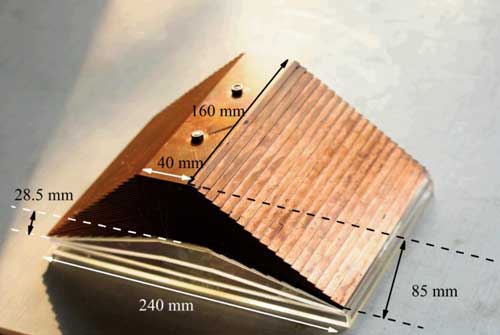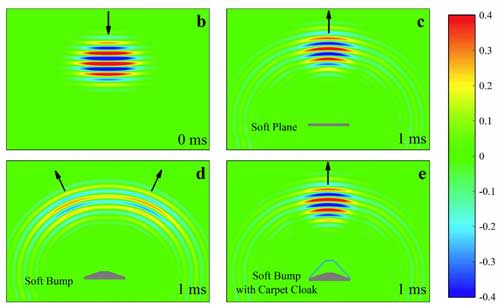| Posted: May 05, 2017 |
First underwater carpet cloak realized, with metamaterial
(Nanowerk News) Researchers at the Institute of Acoustics (IOA) of the Chinese Academy of Sciences have designed and fabricated an underwater acoustic carpet cloak using transformation acoustics, a scientific first.
|
|
The research was published online in Scientific Reports ("Design and demonstration of an underwater acoustic carpet cloak").
|
 |
| This is a photograph of the fabricated sample. (Image: CAS)
|
|
An acoustic cloak is a material shell that can control the propagation direction of sound waves to make a target undetectable in an acoustic system. The carpet cloak modifies the acoustic signature of the target and mimics the acoustic field obtained from a reflecting plane, so that the cloaked target is indistinguishable from the reflecting surface.
|
|
The field of transformation acoustics focuses on the design of new acoustic structures. It shows how to control the propagation of acoustic waves. The parameters of the cloak shell can be given by transformation acoustics.
|
|
However, in most cases, these parameters are too complex for practical use. To solve this problem, YANG Jun and his IOA team adopted a scaling factor and simplified the structure of the carpet cloak with only modest impedance mismatch.
|
|
The research team then used layers of brass plates featuring small channels filled with water to construct the model cloak. This material possesses effective anisotropic mass density in long-wavelength regimes.
|
 |
| These are numerical simulations of the underwater carpet cloak. (Image: CAS) (click on image to enlarge)
|
|
The structure of the carpet cloak, comprised of layered brass plates, is therefore simplified at the cost of some impedance match. "The carpet cloak has a unit cell size of about 1/40 of the wavelength, making it able to control underwater acoustic waves in the deep subwavelength scale," said YANG Jun.
|
|
The proposed carpet cloak has shown good performance in experimental results across a wide frequency range. In tests, a short Gaussian pulse propagates towards a target bump covered with the carpet cloak; the scattered wave then returns in the backscattering direction. The cloaked object successfully mimics the reflecting plane and is imperceptible to sound detection.
|


